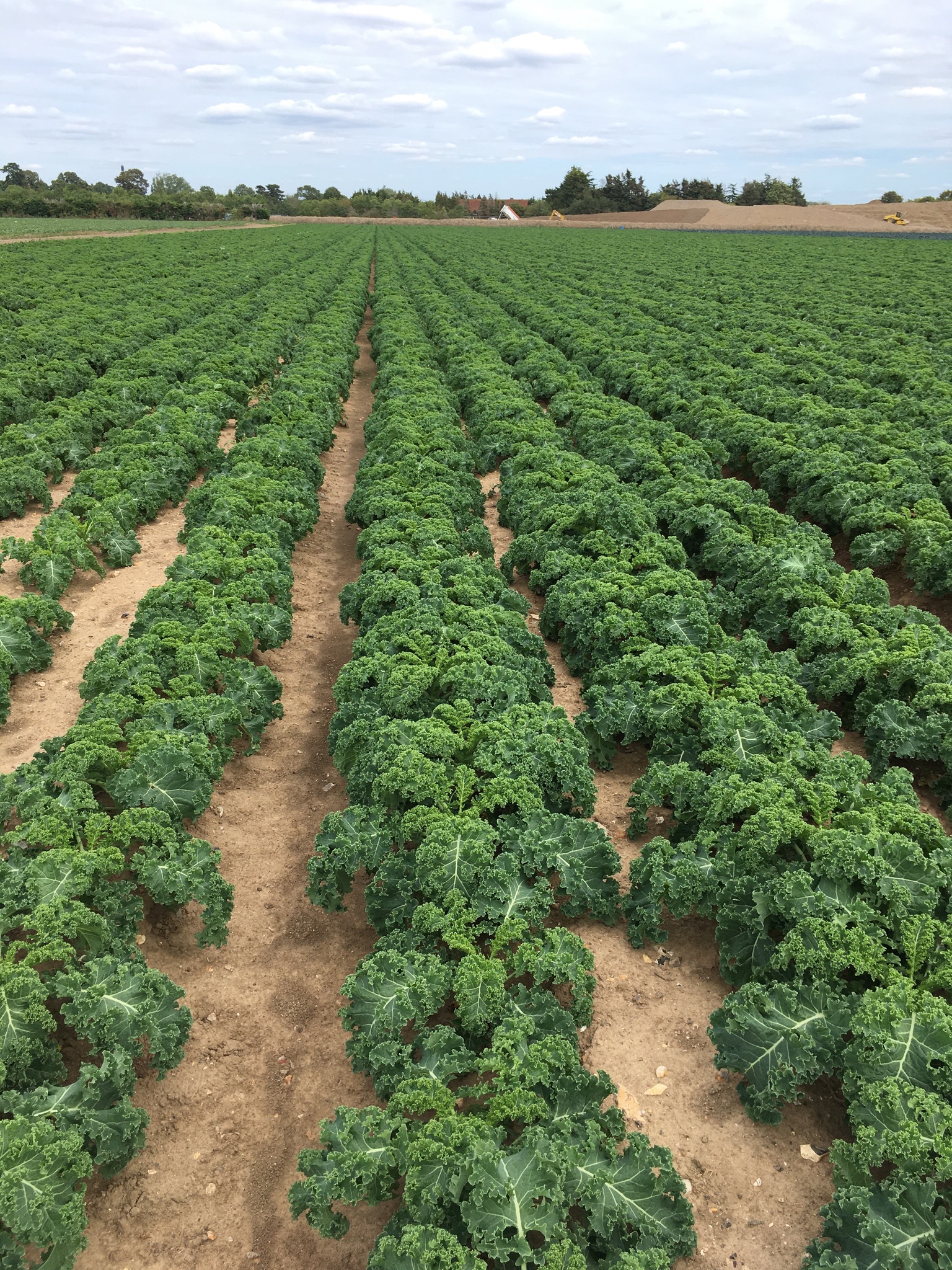One of the challenges in growing food to meet Net Zero Carbon Emissions is in the use of mineral fertilisers. There is a simple fact that most of the organic fertilisers (manures and composts) do not have the nutrient density required of certain key nutrients, Nitrogen in particular, or in the right proportions of Nitrogen, Phosphorus and Potassium (N,P,K).
The information I will describe is in the public domain, a very useful source being the Agriculture & Horticulture Development Board (AHDB) RB209 Crop Nutrient Management Guide. Figures used in this discussion are sourced from there principally.
The first step is knowing the nutrient requirements of any crops being grown and what is already available in the soil. These are widely variable. For instance, Nitrogen (N) requirements can range from none or little, in the case of the leguminous plants like beans and peas, to more than 300kg per hectare in the case of brassica crops like sprouts and cabbage. Root crops lie somewhere in the middle but are variable, so carrots require little additional N at 100kg/ ha or less, but beetroot has high requirements of typically more than 200kg/ ha. Cereals are also variable depending on the specific crop and soil type and range between 100kg/ ha to 250kg/ ha.
Certain types of soils (high organic matter, clay, loam and silt soils) can hold significant amounts of nutrients within them, particularly if previous crops in a rotation system have high leaf matter content which can be incorporated back into the soil. However, shallower and lighter sandy soils retain little water so cannot store Nitrogen and other nutrients as readily. Weather also plays its part with high rainfall likely to cause more leaching, leaving less nutrients in the soil than drier areas.
This means that farmers must calculate carefully the nutrient requirements for each crop and soil type in order not to either significantly under- or over-apply which can lead to economic consequences of poor yields in the former case and excessive fertiliser costs in the latter instance. The latter will also lead to Nitrogen or other nutrients leaching from the soil potentially causing pollution and can have toxic effects on the crops.
I use this to illustrate the complexity that farmers face when assessing their fertiliser needs.
In the case of organic fertilisers, their nutrient contents are also variable, but the main drawbacks to them are their bulk and the relatively low nutrient content, particularly of Nitrogen in relation to crops’ needs. Farmyard manures for most species (cattle, sheep, pigs, ducks, goats) contain typically 5-10kg total N per tonne of material whereas poultry manure is 20-30kg N per tonne, but the available N for crops to use can be significantly less. To apply sufficient N for an “average” crop requiring 200kg N per hectare, this means applying 20-40T of most manures per hectare or 7-10T poultry manure.
However, this will lead to an imbalance in the supply of the other main nutrients required, namely Potassium and Phosphates where the typical crop requirements are much less than Nitrogen, but organic fertilisers nutrient contents have similar contents of N, P and K, typically for cattle manure 6Kg N per tonne of manure, c.3Kg/T of P and 9Kg/T of K.The tables below show some typical nutrient contents of organic fertilisers and one example of a compound mineral fertiliser in the top table and the lower table shows the demand for nutrients per hectare for some common crops. Compound fertilisers are available in a large variety of nutrient contents, e.g. 10% each of N/P/K (or 10-10-10 fertiliser as it is called), or 15-15-15, 27-6-6, so can be tailored better to suit individual crop requirements. The crop requirements assume low levels of existing soil nutrient levels prior to additions of fertilisers and in real conditions may vary widely depending on soil type, previous crops grown, whether straw is incorporated back into the soil or removed for other uses (straw removal has been assumed in this case), use of mixtures of organic and mineral fertilisers, weather, etc. However, it provides a simple illustration of the complexity of matching supply of each nutrient to demand.


Human compost, mainly food and other organic waste, e.g. from gardens, has the advantage over livestock manures of its potential use for direct human consumption food crops (e.g vegetables), but it has the same problems associated with the farmyard manures, namely its bulk and lower nutrient densities. Nitrogen content is similar to cattle manure at 7-11kg per tonne. There is another drawback: although cheap to buy, it is expensive to transport at often more than £50/T even for modest distances as I discovered for my own farm. Unless a farmer has the good fortune to live close to a source of human compost to provide the level of Nitrogen a crop requires may cost you >£1,000 per hectare whereas if you use mineral fertilisers at current costs of c. £350 per tonne, you may only need one tonne of such to get the nutrients for the crop you need. Also, the treatment methods for green compost produce high levels of Green House Gases so is not a silver bullet for replacing mineral fertilisers.
This is not to say that use of organic fertilisers is without its uses. They have an important role to play to help enrich the carbon content of soil and help improve its structure and they can replace some of the need for mineral fertilisers, helping to reduce the cost and reliance on those. What this means is that we still need manufactured mineral fertilisers to help provide the balance of nutrients required delivered in a controllable manner to ensure we are producing crops as effectively as possible. Most mineral fertilisers are imported and in a move which further adds to the cost pressures on farmers, the government is introducing an import duty on imported fertilisers of £50-£75 per tonne from 2026, but this will mean effectively all mineral fertilisers are affected by the tax.
There have been large-scale trials to manufacture mineral fertilisers with renewable energy (see Mark Tucker of Yara at the Royal Society Innovating Agriculture conference June 2024), but the process is in its infancy and the forecast costs are more than for current processes.
In summary, there are no simple solutions which come without economic costs or entirely solve the GHG emissions quandary, and changes will hit farmers profit unless wholesalers, retailers, consumers and policy makers are all prepared to accept the additional costs through the supply chain, and how often does that happen?

